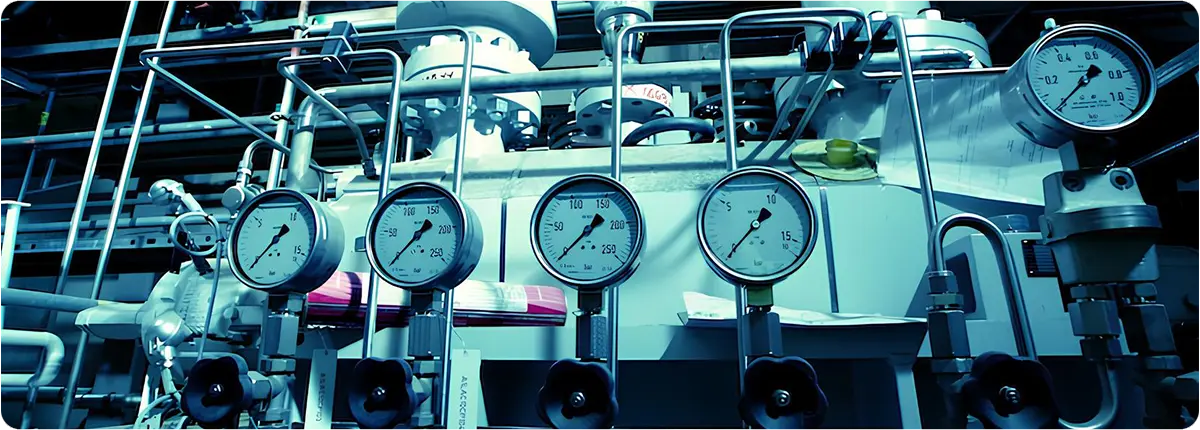Pressure measurement plays a vital role in industrial processes by ensuring safety, product quality, and energy efficiency. Inaccurate pressure readings can lead to equipment failures, production losses, and safety hazards. Therefore, the selection and use of the right pressure measurement systems are essential.

PRINCIPLES OF PRESSURE MEASUREMENT
Pressure is defined as the force exerted per unit area:
P = F / A
Where P is pressure (Pa), F is force (N), and A is surface area (m²).
Types of pressure:
- Absolute Pressure: Measured relative to a perfect vacuum.
- Gauge Pressure: Measured relative to atmospheric pressure.
- Differential Pressure: The difference between two pressure points.
TYPES OF PRESSURE SENSORS
- Bourdon Tubes: Mechanical indicators, cost-effective but limited in precision.
- Differential Pressure Transducers: Widely used for flow measurement and filter monitoring.
- Piezoelectric Sensors: Provide high sensitivity for dynamic pressure changes.
- Capacitive Pressure Sensors: Offer high accuracy and long-term stability.
- Strain Gauge Sensors: Measure pressure through changes in electrical resistance.
FUNDAMENTAL EQUATIONS AND MEASUREMENT EXAMPLES
Hydrostatic pressure formula:
P = ρ · g · h
Where ρ is fluid density (kg/m³), g is gravitational acceleration (9.81 m/s²), and h is fluid height (m).
Flow rate derived from differential pressure:
Q = C · √ΔP
Where Q is flow rate (m³/s), C is the flow coefficient, and ΔP is the pressure difference (Pa).
FACTORS AFFECTING MEASUREMENT ACCURACY
- Temperature variations and thermal drift
- Sensor calibration and accuracy
- Vibrations in the pipeline
- Installation conditions and environmental influences
STANDARDS AND CALIBRATION
- ISO 5167: Standard for differential pressure measurement devices.
- IEC 61298: Defines test methods for pressure transducers.
- ISO 17025: Accreditation requirements for calibration laboratories.
APPLICATION AREAS
- Reactor pressure control in chemical industries
- Steam line monitoring in power plants
- Pipeline pressure monitoring in oil and gas sectors
- Process pressure management in the food and beverage industry
CONCLUSION
Pressure measurement systems are critical to ensuring safety and efficiency in industrial plants. By selecting the appropriate sensor, performing regular calibration, and ensuring proper maintenance, processes can be managed reliably and sustainably.